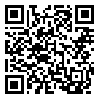Volume 15, Issue 3 (11-2018)
jor 2018, 15(3): 121-139 |
Back to browse issues page
Download citation:
BibTeX | RIS | EndNote | Medlars | ProCite | Reference Manager | RefWorks
Send citation to:



BibTeX | RIS | EndNote | Medlars | ProCite | Reference Manager | RefWorks
Send citation to:
Azar A, Pournasir M, Mosafer H. assessment and forecasting post offices’ efficiency of guilan province with data envelopment analysis method and evolutionary GMDH-type neural network. jor 2018; 15 (3) :121-139
URL: http://jamlu.liau.ac.ir/article-1-1276-en.html
URL: http://jamlu.liau.ac.ir/article-1-1276-en.html
Management Group, Lahijan Unit, Islamic Azad University, Lahijan, Iran , pournasir.m@gmail.com
Abstract: (3562 Views)
Communication plays an important role in the growth of societies and people. The Postal network is considered to be the largest physical link and network of exchanges among communities in the world, which is of particular importance for continuous communication with customers in these types of service units. In contrast, prediction, control and analysis have become an inevitable necessity in organizations and a great management tool for decision making. In this paper, baseline data envelopment analysis models for measuring and evaluating post offices’ efficiency in Guilan province in years 1392 & 1393 have been investigated. For this purpose, CCR input-axis is better than the BCC model. Because the traditional data envelopment analysis models are not capable of introducing the optimization model and the most efficient unit, we use Anderson-Peterson’s model, in which Rudsar & Anzali units are best at 92 and 93 consecutives. Finally, we use the neural network to integrate the data access approach for predicting the efficiency of postal units. The results show that this new model has good potential for prediction, and because of its high precision, it can replace traditional methods.
Keywords: Efficiency, Data Envelopment Analysis, Anderson-Peterson technique, Group Method of Data Handling
Type of Study: Applicable |
Subject:
Special
Received: 2016/07/3 | Accepted: 2017/07/1 | Published: 2018/11/15
Received: 2016/07/3 | Accepted: 2017/07/1 | Published: 2018/11/15
Send email to the article author
| Rights and permissions | |
 |
This work is licensed under a Creative Commons Attribution-NonCommercial 4.0 International License. |






